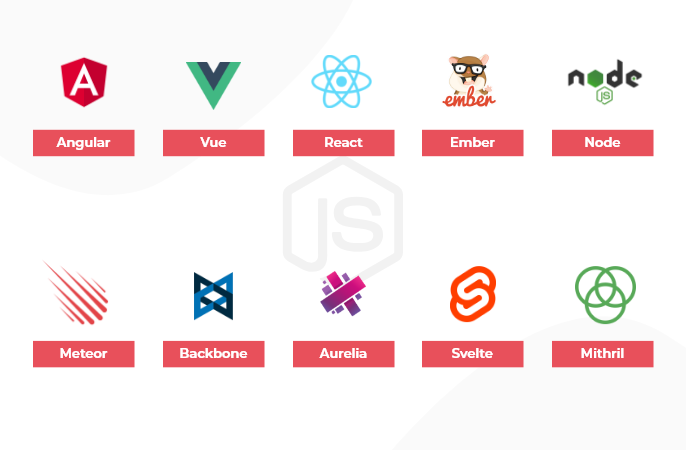Tech Versum: Explore the Future of Technology
Dive into the latest trends and innovations in technology with Tech Versum.
JavaScript Frameworks: Choose Your Adventure
Explore the top JavaScript frameworks and find your perfect match! Dive into our guide and level up your web development skills today!
Understanding the Key Differences Between Popular JavaScript Frameworks
JavaScript frameworks are essential tools for developers, providing structured ways to build robust and maintainable web applications. When discussing the key differences between popular JavaScript frameworks, it’s vital to consider factors like performance, community support, and ease of use. For instance, React is widely recognized for its component-based architecture, which allows developers to create reusable UI components, while Angular offers a comprehensive solution with a full-fledged MVC (Model-View-Controller) structure, making it suitable for larger applications. On the other hand, Vue.js strikes a balance between the two, providing flexibility and simplicity for developers who want to build single-page applications without the steep learning curve.
Furthermore, another critical aspect of understanding these frameworks is their ecosystem. React, developed by Facebook, has a vast ecosystem with libraries like Redux for state management and React Router for navigation. In contrast, Angular, created by Google, comes with its own set of tools out-of-the-box, such as RxJS for handling asynchronous data streams. Finally, Vue.js boasts a growing ecosystem with a gentle learning curve, making it an attractive option for new developers. Ultimately, the choice between these frameworks depends on project requirements, team experience, and the desired speed of development, making it essential to evaluate each framework's strengths and weaknesses.

Which JavaScript Framework is Right for Your Next Project?
Choosing the right JavaScript framework for your next project is crucial for ensuring both developer productivity and application performance. With numerous options available, framework selection often boils down to factors such as project requirements, team expertise, and long-term maintenance. Popular frameworks like React, Vue.js, and Angular each bring unique features to the table. For instance, if you're building a single-page application (SPA), React’s component-based architecture can greatly enhance the user experience, while Vue.js might appeal for its simplicity and gentle learning curve.
When assessing which framework fits your needs best, consider the following criteria:
- Community Support: A robust community can provide a wealth of resources and troubleshooting help.
- Scalability: Ensure the framework can grow with your project's demands.
- Performance: Evaluate whether the framework meets your performance benchmarks.
The Future of JavaScript Frameworks: Trends to Watch
As we look forward to the future of JavaScript frameworks, several trends are emerging that developers and businesses should pay attention to. One of the most significant shifts is the move towards server-side rendering (SSR) and static site generation (SSG). Frameworks like Next.js and Nuxt.js are gaining popularity due to their ability to enhance SEO performance, improve loading times, and deliver a better user experience. Additionally, the integration of TypeScript is becoming more prevalent, enabling developers to write safer, more maintainable code. This trend toward type safety aligns with the growing complexity of applications and the demand for better tooling.
Another trend to watch in the realm of JavaScript frameworks is the rise of micro-frontends. This architecture allows large applications to be divided into smaller, manageable pieces, which can be developed and deployed independently. As organizations strive for agility and flexibility, micro-frontends provide the scalability that traditional monolithic frameworks often lack. Furthermore, the adoption of web components is becoming increasingly relevant, allowing developers to create reusable, encapsulated elements that can work across different frameworks. These innovations promise to reshape how developers build applications, making it essential to stay ahead of the curve in this rapidly evolving landscape.